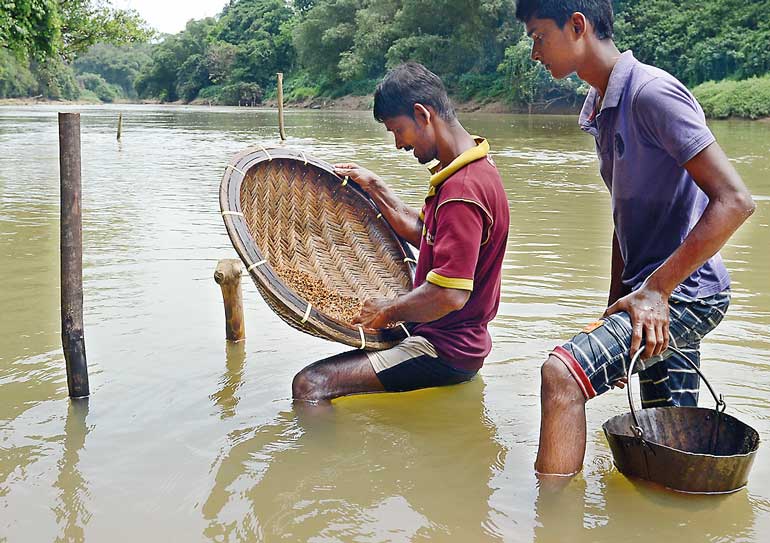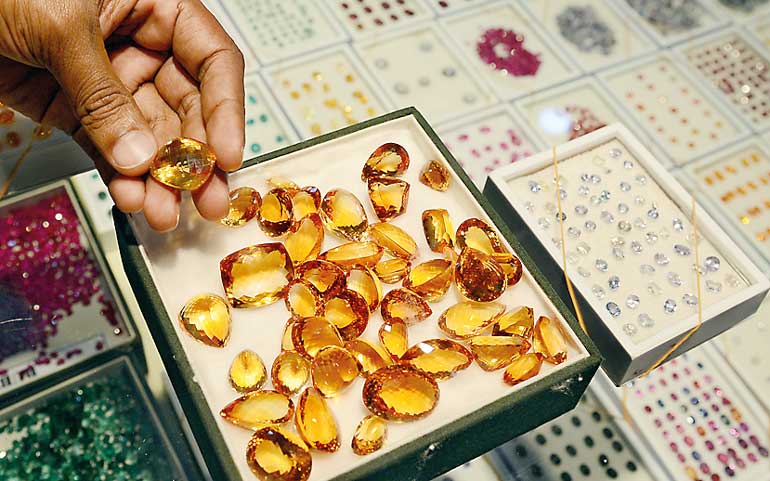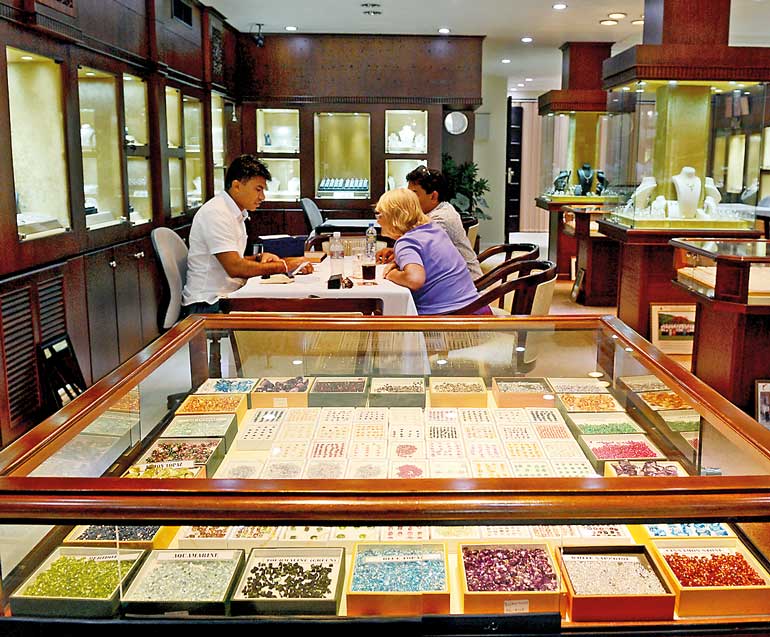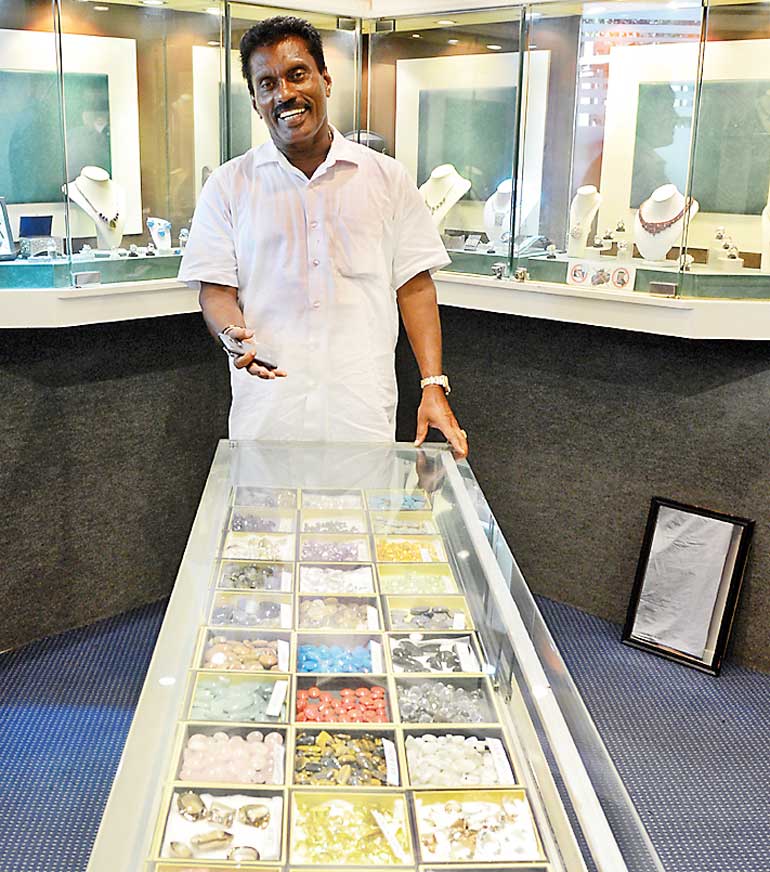Sunday Dec 21, 2025
Sunday Dec 21, 2025
Thursday, 28 April 2016 00:00 - - {{hitsCtrl.values.hits}}



 AFP: From the Queen of Sheba to Britain’s Duchess of Cambridge, Sri Lanka’s sapphires have adorned royalty through the ages, but a flood of cheap imitations is threatening the island’s reputation for the precious stones.
AFP: From the Queen of Sheba to Britain’s Duchess of Cambridge, Sri Lanka’s sapphires have adorned royalty through the ages, but a flood of cheap imitations is threatening the island’s reputation for the precious stones.
Ceylon sapphires, known after the island’s colonial-era name, enjoyed a huge boost five years ago when it was revealed that one formed the centrepiece of the engagement ring Prince William gave Catherine Middleton.
They are renowned as the best sapphires in the world, but gem traders say artificial stones -- coloured glass that to the untrained eye are virtually indistinguishable from sapphires -- are being passed off as the real thing to unsuspecting buyers.
They fear that is tarnishing the image of the gems, seen as a major potential income stream for an economy still recovering from decades of civil war.
“This is the biggest threat to our industry. Our reputation is at stake,” said Nissanka Weerasena, who owns a chain of upmarket jewellery stores in Sri Lanka.
“These coloured pieces of glass imported by the kilo are killing the market for gems.”
Stories of buyers getting conned into buying fakes are legion.
National Gem and Jewellery Authority chairman Asanka Welagedara recalled how one Australian buyer who spent $14,000 only discovered that nearly half the stones he had been sold were fakes when he had them tested by the state-run regulator -- by which time it was too late.
Another scam is to heat treat opaque, semi-precious stones to give them the colour and clarity of a real sapphire.
“The technique of heat treating semi-precious stones originated in Thailand, but our people have now perfected the art,” Welagedara said.
“There is a 10-fold price difference between a heat-treated blue sapphire and a natural stone, so naturally there is a temptation to sell treated stones as natural ones.”
Problems are particularly common along Sri Lanka’s southern coast, a popular tourist draw.
“We are seeing a new trend of cheating, especially along the coastal tourist belt,” said a senior Sri Lankan police officer who spoke to AFP on condition of anonymity.
Illegal miners
Geologists say more than four-fifths of Sri Lanka’s 65,000 square kilometre (25,000 square mile) land mass could contain underground gems.
The best-know mining area is Ratnapura, or the City of Gems, where a stone thought to be the largest blue star sapphire in the world was discovered last year.
Blue star sapphires, so called because they reveal a six-line star when placed under light, are particularly sought after.
The owner -- a Sri Lankan gem dealer who told AFP he wanted to remain anonymous for fear of being robbed -- has valued the stone at $300 million, although he won’t disclose how much he paid for it.
On the banks of the Kalu river that flows through Ratnapura, hundreds of young men pan for gems, hoping that they too might one day strike it rich.
Officially, there are 200,000 miners employed in the industry, but another half a million are believed to be working illegally.
Eranga Kumara, 22, is an illegal prospector who dives between 10 and 15 feet (three and 4.5 metres) to the river bed to look for stones.
“Usually we get a few stones and I make about 10,000 rupees ($70) a day,” Kumara told AFP on the banks of the Kalu river as his friends kept a look out for police.
“But we can only work during the dry season, from January to March.”
Dulgalage Jayatillake acts as a middleman between these small-time miners and the merchants who come to Ratnapura from Colombo and elsewhere in search of gems.
At a makeshift exchange on a bridge in Ratnapura where he and dozens of others line up every morning waiting for buyers, there are concerns that artificial stones are scaring away buyers.
“I meet the miners directly and buy from them. That is to make sure I don’t get caught out by fakes,” Jayatillake told AFP.
“Imitation stones are giving everyone a bad name.”

The Gem and Jewellery Authority says it can’t stop the import of artificial stones, which are necessary for the low-end costume jewellery industry.
But it is taking steps to prevent fraud by vetting dealers and giving them a stamp of approval that buyers can trust.
For Rs. 500 ($3.50) it will issue a certificate of authenticity, which its chairman Welagedara says is the “best guarantee against fraud”.
Gem expert Rohan Pitigala said it was difficult for the untrained eye to spot an imitation gem stone, but not impossible.
“If you see a stone which is flawless it is too good to be true,” he said.